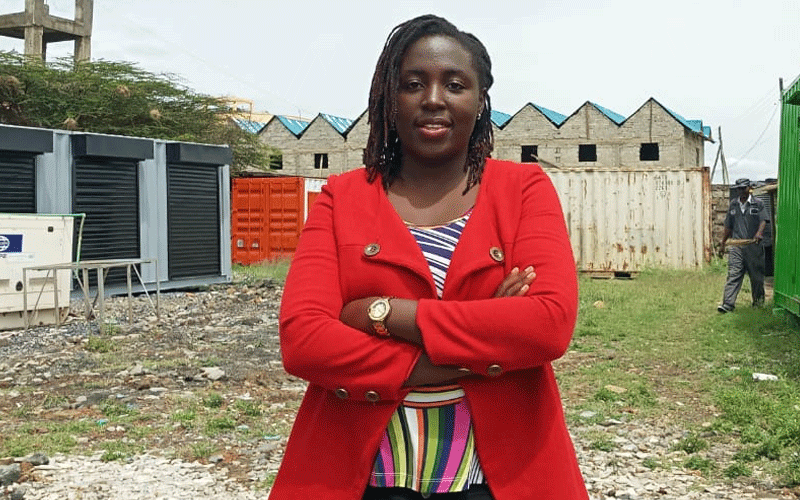Using locally available materials for modern design ideas

Harriet James @harriet86jim
What attracted you to the interior design world?
Architecture was my first love, but after a bit of research, I figured I would be happier being an interior designer.
I have been an arts student from primary school, but construction came in a bit later.
What are the misconceptions that people have about interior designers in Kenya?
Interior designers are often mistaken for interior decorators. We make spaces functional for the purpose it was intended.
It is through this that the beauty of the space is seen. Our firm, which started in 2018, offers an alternative solution to building and generally creation of functional spaces.
We use shipping containers that would otherwise be used only for transiting goods or storage, to create utility spaces such as extra housing units, toilets and bathrooms, classrooms, clinics, roadshows and portable kitchens just to name a few.
We also create more uses for tiny spaces that are often ignored. By designing furniture pieces from recycled materials such as tyres, pallets and cable spool. In short, we are a green designs company.
Are green designs a popular trend locally?
It is picking up fast in the last few years and this is a good thing. There is a whole movement around tiny living, sustainable living and alternative building.
This has touched architecture and interior design; it perfects the whole practice.
We see more of space saving and multipurpose furniture as well as more eco-friendly materials being used to fit out spaces. 
This trend has seen designers going beyond building codes to improve performance of spaces as well as minimise both environmental impact and costs.
How will such a trend benefit in the real estate world?
As designers, we have a responsibility to make the world a better place. Giving quality spaces in turn gives quality lives to the users of this space.
We don’t have to destroy our environment to make our spaces better. I think it’s more creative to use the environment, as it is makes our designs better.
Being a tiny space enthusiast, I would love to see multiple use of a small space as opposed to more space for every single use.
It’s a bigger design challenge. Everyone can work with a big space, but how many can work with a small one?
Maybe if we manage to increase usage of space and minimising these spaces, then we will be able to create affordable living space and solve the current housing problem we are yet to get a conclusive sustainable solution to.
What simple designs apply for eco-friendly homes?
Reuse-Repurpose-Recycle. Work with what you have before buying something new or imported.
If your seats are in perfect condition, but you no longer love the fabric, re-upholster them instead of buying new seats.
Get that old wall unit from your parents, paint it the way you like it. Get those vintage doors and windows as an addition on to your next construction.
Just try to give a new life to something before throwing it out. You’d be amazed at how rich old pieces can make your spaces if restored correctly.
If all this sounds impossible to do by yourself, consult a designer. It will save you a lot of headache and time.
How are you coping with the coronavirus?
As things are now, there isn’t much we can do at work and on sites. It is better to be safe than sorry.
We take a break from site works until this cloud passes. We now work from home on container house designs.
We take this time to also offer online consultancy for clients who prefer to do a bit of design projects on their own.
Designers never miss personal projects; I take this time too to finish a few projects of mine.
I have my container house sketches to complete and a few cushion covers to sew.
What challenges do you face?
The biggest problem has always been capital and expertise. Setting up an outfit of this nature is capital intensive.
We also lack professionalism and expertise in container conversion industry and so we are constantly researching and training.
It is a constant process as we learn something new about shipping containers every day.
Our role in the built environment is yet to be fully understood. This means the value we bring on board is not often recognised.
Interior design is wide and we have different experts in different disciplinarians.
There are many challenges, but I am happy that our group, Interior Designers Association of Kenya, has helped us deal with some of these challenges.
Future trends?
More use of containers. I hope to see introduction of multi-storied container hotels and hostels in Kenya. More of container classrooms replacing mabati classrooms.



